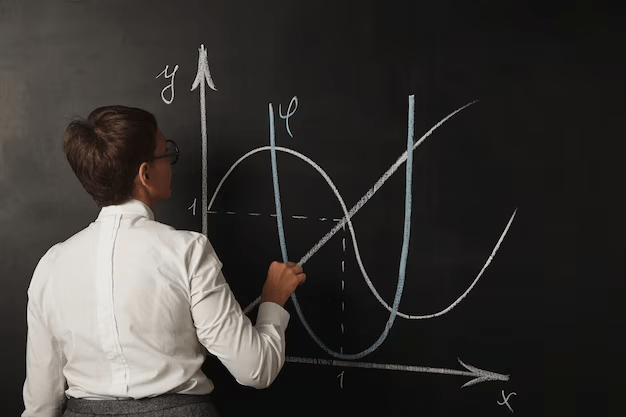Setting trigonometric values like the sine of 30 degrees to a tune involves incorporating mathematical principles into musical compositions. By assigning specific musical elements, such as pitch or tempo, to corresponding trigonometric functions or angles, composers can create a harmonious fusion of mathematics and music.
This approach allows for a unique and creative expression, transforming mathematical concepts into an auditory experience. It requires a thoughtful integration of both disciplines to ensure the resulting tune accurately reflects the intended trigonometric values while maintaining musical coherence and aesthetic appeal.
7 Ways To Memorize The Unit Circle
Memorizing the unit circle, a fundamental tool in trigonometry, can be a challenge, but several techniques can make the process more manageable:
- Repetition: Practice regularly to reinforce the information. Repeated exposure helps solidify the unit circle’s angles and coordinates in your memory.
- Mnemonic Devices: Create mnemonic phrases or acronyms to associate with the key angles and coordinates. For example, “All Students Take Calculus” helps remember the signs of trigonometric functions (positive or negative) for each quadrant.
- Visual Aids: Utilize visual aids like diagrams or charts to visually represent the unit circle. Draw the circle, label the angles, and include the corresponding coordinates to enhance your spatial memory.
- Chunking: Divide the unit circle into smaller sections or quadrants and focus on memorizing one part at a time. Breaking it down makes the information more digestible.
- Create Patterns: Identify patterns within the unit circle, such as the symmetry of coordinates or the relationships between angles. Understanding these patterns can simplify memorization.
- Practice with Applications: Apply the unit circle concepts to solve trigonometric problems. Practical applications help reinforce your memory as you see how these values are used.
- Use Flashcards: Create flashcards with angle values on one side and coordinates on the other. Regularly quiz yourself to strengthen recall and ensure mastery of the unit circle.
Combining these techniques and tailoring your approach to your learning style can significantly enhance your ability to memorize the unit circle efficiently and effectively.
What Colored Pencils Can You Use To Color Code Patterns On The Unit Circle?
When color coding patterns on the unit circle, it’s essential to choose colored pencils that provide clarity and differentiation. Opt for a set of colored pencils that includes distinct hues for each quadrant, making it easier to visually identify angles and trigonometric values.
For instance, use warm colors like red and orange for the first quadrant, cool colors like blue and green for the second quadrant, and variations or complementary colors for the remaining quadrants.
This approach enhances visual organization and facilitates a more intuitive understanding of the relationships within the unit circle. Experiment with color combinations to find a scheme that suits your preferences and aids in memorization and comprehension.
What Method Helps Reinforce Memorization Through Retrieval Practice?
The method that helps reinforce memorization of the unit circle through retrieval practice is self-testing with practice questions.
Creating tests and quizzes for yourself that require actively recalling or retrieving unit circle values is useful for reinforcing what you have learned. This engages and strengthens the retrieval pathways in your brain for accessing that trigonometry knowledge.
Each time you successfully answer a well-designed self-test question targeting a specific angle value or trig values ratio, you reinforce your ability to retrieve that piece of information again later. Checking any errors also solidifies the correct values through repeated memory retrievals.
Practicing retrieval makes unit circle memory far stickier and more durable compared to just passive review. Self-testing your knowledge engages you, provides feedback, and forges stronger connections resulting in better memorization over time. Keeping retrieval practice in your learning toolkit is key for success memorizing the unit circle.
What Helps Cement Correct Values When Memorizing The Unit Circle?
Checking errors cements correct values when memorizing the unit circle. Whenever you take a practice test or quiz yourself on unit circle trig values, make sure to check any incorrect answers and identify what the right value should have been.
Seeing the contrast between the mistake and accurate value helps reinforce the proper sine, cosine, or tangent that needs committing to memory. It also keeps you from cementing errors and having to unlearn incorrect associations later.
Taking the extra effort to confirm where your knowledge is shaky locks in a solid foundation. Spend time repeating and rehearsing any tripped up angle calculations. Verbally reinforce the right ratio relationship. This overwrite of the mistake drives those accurate values more concretely into long-term retention.
Making corrections after practice tests or self-quizzes is essential follow-through. It cements those correct building blocks for confidently using trig identities, derivatives and more. Double checking your work cements unit circle memory mastery.
What Role Does Creativity Play In Devising Memory Tricks For This Topic?
Memorizing the unit circle requires linking angles to sine, cosine, and tangent ratios. Check any incorrect answers when you quiz yourself. Identify what the right values should have been.
Witnessing the contrast between your mistakes and the accurate ratios drives home solid learning. Seeing that mismatch stimulates an overwrite correction in your brain, helping overwrite fuzzy knowledge with crystal clear correctness.
Cementing correct values through error analysis and correction prevents having to unlearn errors later. This builds unshakeable retention of the unit circle for math and science.
Why Is Overlearning Important When Committing The Unit Circle To Memory?
Overlearning is key when memorizing the unit circle. Going beyond getting answers right once cements long-term retention. Repeatedly rehearsing and retrieving the ratios for each angle past mastery levels forges neural pathways for effortless access later.
It locks in automaticity, eliminating hesitation in calculations. This instinctive reflex ability is crucial for higher math and science work. That’s why overlearning unit circle values is essential.
What Can You Make Flashcards For To Memorize Common Unit Circle Angles And Trig Values?
You can make flashcards for the exact values of common unit circle angles like 30, 45, 60 degrees and their corresponding sine, cosine, tangent ratios. Also helpful are reference angles like 30, 45, 60 degrees and cofunction identities.
Drill these repeatedly. Checking any mistakes cements correct ratios for confident trig values use later. Flashcards enable portable, frequent retrieval practice.




